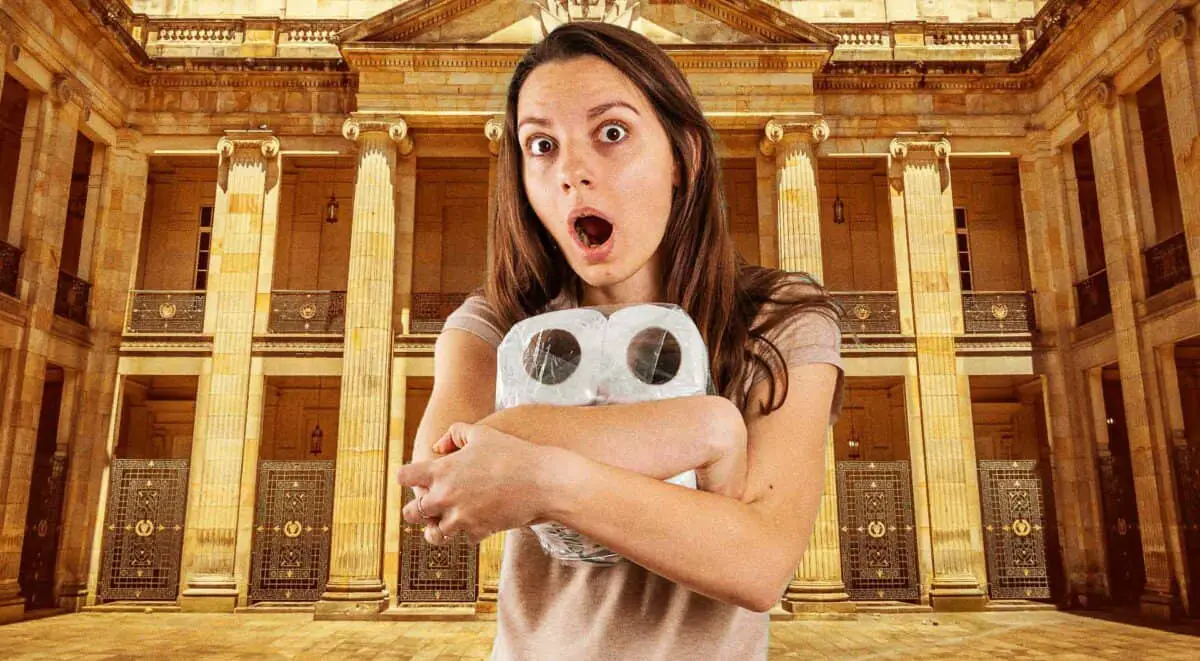Bikepacking Hammock Setup Guide

As an Amazon Associate we earn from qualifying purchases made on our website. If you make a purchase through links from this website, we may get a small share of the sale from Amazon and other similar affiliate programs. You can read our complete legal information for more details. By using this site, you agree the information contained here is for informational purposes only. For specific medical questions, consult your doctor. NO information on this site should be used to diagnose, treat, prevent or cure any disease or condition.
Bikepacking is a minimilists sport. It requires you to make the most of every inch on your bike and avoid any unnecessary weight. Using a hammock sounds like a great idea, but what kind is best, and how should you set it up?
You should use tarps along the bottom of the sleeping area. This will prevent bug bites and excessive moisture. Additionally, you should avoid stretching out your hammock too much so that you don’t have enough back support.
Are hammocks safe to use while bikepacking? Which hammock is best for you? Keep reading to learn more!
Is a Hammock Good for Bikepacking?
Hammocks are an excellent option for shelter while bikepacking, depending on where you’re traveling.
Also, hammocks are great for staying dry if the ground is swampy and are light and easy to carry. They’re also relaxing and good for the back after sitting on a bike seat for hours all day.
Hammocks are a form of sleeping bed or couch that suspends from two trees. They’re usually made from soft materials such as linen or cotton. However, some modern hammocks have metal frames and rope bedding designed to support the human body comfortably.
Although considered primarily a luxury item today, this wasn’t always the case.
The ancient Mayans first used hammocks in countries such as Mexico and Guatemala. These hammocks were used for safety reasons by these people.
The jungles of South America have many dangerous animals and insects. These hammocks provided a safer way for people to sleep and relax without experiencing an animal attack.
For bikepackers, these hammocks can provide similar protection and comfort. This is why they make an excellent traveling bed since they’re one of the best ways to stay dry and safe.
This isn’t to say that hammocks are better than tents or simple sleeping bags and tarps. Rather, you need to figure out what means of shelter is best for you based on your needs and travel plans.

How Do You Set Up A Hammock For Bikepacking?
The basics of setting up a hammock include finding trees close enough together to tie your hammock. Pick a spot where the ground is highest, free from brush and brambles. This will minimize moisture and bug infestation.
You should use tarps whenever possible for setting up your hammocks. Tarps will help shield you from bugs as well as rain.
Tarps are cheap, light, and don’t take up too much space.
Ideally, use a tarp above and below your hammocks. This will prevent bugs from reaching you from the ground, while the above tarps shield you from rainfall.
Line the bottom of your hammock with a thick quilt or sleeping mat. This will offer your back more support and help keep you warm all night long.
For more in-depth info on camping, while bikepacking, you will want to return to this article: Where to Camp When Bikepacking?
Best Hammocks for Bikepacking and How to Set Them Up
Before you go and get your hammock, you need to consider what you’ll need to complete your setup. Remember that you aren’t simply setting up a rope hammock in your backyard to relax.
Your hammock is your shelter while you bikepack. You’ll need several additional items to make your hammock a secure and sufficient shelter.
Some of the items you should bring include the following:
- Insulated quilt or sleeping sheet
- Mosquito net
- Water tarp
- Extra rope or suspension
Most hammocks have a standard size. However, there’s no guarantee that this size will be sufficient for the naturally spaced trees.
Extra rope or suspension can ensure that you can fit your hammock properly, no matter what.
Water tarps and bug nets are a definite necessity. Water tarps or rain flies will keep you dry in the rain. Mosquito nets are a definite must, especially in swampy and rainy spaces during the summer.
Below we’ll go over the six best hammocks for your next bikepacking journey!
1. Evergreen Lightweight Outdoor Portable Camping Hammock – Single & Double with Tree Straps
The Evergreen camping hammock is an awesome choice for anyone on a budget seeking quality. This hammock costs around $40.00 on Amazon, providing the user with support and comfort.
It’s lightweight, weighing just over 2 pounds for the single hammock, and versatile. Evergreen is a popular and well-rated outdoor outfitters company.
You will need to purchase a bug net and water tarp separately. But the hammock is a great option with comfort and affordability.
2. Wise Owl Outfitters Camping Hammock – Portable Hammock Single or Double Hammock
The Wise Owl camping hammock has everything you need in a lightweight, compact hammock. This hammock is large, and thick, yet incredibly light for its size and capacity. According to the seller, this hammock weighs between 24-28oz (just under 2 pounds).
Fortunately, this hammock is made of nylon and won’t become wet on the bottom when it rains. This will make staying warm and dry much easier! Although, you’ll need to buy a bug net and tarp separately.
Fortunately, Wise Owl has their own line of rain tarps and bug nets!
3. Sunyear Camping Hammock, Portable Double Hammock with Net
Sunyear camping hammocks are excellent, affordable, and have extremely high ratings. With over 5,000 reviews on Amazon, they have a stellar 4.5 stars!
They offer a built-in bug net which is super useful for the newbie. You won’t have to worry about buying a separate net or ensuring the net will fit properly.
Finally, they offer enough space for two people and adjustable suspension ropes. According to the seller, the connection ropes can extend for over 2 feet, making them adaptable to different camping environments.
4. Easthills Outdoors Jungle Explorer 118″ x 79″ Double Camping Hammock with Separated Mosquito Bug Net and Waterproof Rainfly
The Easthills Outdoor Jungle hammock is affordable, with a 4.5-star review and nearly 2,000 reviews. It has a bug net and rain tarp, which makes it great for easy transport and setup.
It’s also very affordable, costing around $60.00 on Amazon. Purchasing this hammock will help you rest easy and travel lightly.
5. OneTigris Hideout Hammock Underquilt, Full-Length Lightweight
The Tigris Hideout hammock has an easy set-up and compact travel system. This can easily fit on the back of your bike in an under-seat pouch!
It blends with the environment well and has a waterproof underside. You can set this hammock up in the forest or the beach without fear of getting wet.
It’s spacious for resting yet compact for storage! Everything you need for your off-road adventures.
6. ENO, Eagles Nest Outfitters DoubleNest Lightweight Camping Hammock
The ENO Eagle’s Nest is awesome for people traveling in pairs. These hammocks are light, weighing only 19oz, and spacious. You can easily fit inside with your spouse, partner, or best friend!
Being made of Nylon makes this hammock waterproof and breathable. This is great for humid, wet areas. Placing a warm blanket along the bottom will help keep you warm if you experience cold nights.
I recommend this one for wet, hot areas over cold regions, though!

How Large Should Your Bikepacking Hammock Be?
Choosing a hammock for bikepacking isn’t too different from choosing a camping hammock.
As a general rule, you should always choose a hammock that’s at least two feet longer than your height. However, you shouldn’t go too overboard because the larger the hammock, the heavier it is to carry.
Perks of Large Hammocks
Some of the perks of a larger hammock include the following:
- More space
- Even weight distribution
- More support for heavier people
- Better back support
- Can fit 1-3 people
- Good for kids
Remember that larger hammocks will be heavier to carry. Often they’re made with thicker, sturdier material which weighs considerably more than a small, Nylon hammock.
However, they are excellent for people traveling as a family or with a group. Most large hammocks can fit three small kids or two full-grown adults. This means you’ll have extra space on your bikes since you’ll need only one or two for everyone.
Perks of Smaller Hammocks
Some perks of small hammocks include:
- Good for singles
- Avoid unnecessary weight
- Less firm
- Warmer
The primary perk of smaller hammocks is their lightweight nature. Small hammocks are better if you’re traveling alone or your companions wish to sleep alone.
There’s no need to bring an extra large hammock if you plan to sleep alone. If you’re five foot five, you should look for a hammock that’s a few inches longer than you. But, if you’re a taller person (6 feet or above), you might want to get one that’s at least one foot longer than you.
Ideally, get a hammock two feet longer than your height, but no more. This is especially true when you’re sleeping alone. The more weight you carry, the more it will drag you down!
What Extra Supplies Should You Bring With Your Hammock?
A rain tarp and bug net are an absolute necessity. You cannot go hammocking while bikepacking without something to protect you from the elements.
Additionally, you should bring spare rope, hooks, and tools for connecting your hammock to trees or posts.
One important question to answer before leaving on your journey is what type of net and tarp you’ll need. Will you be traveling in an area prone to torrential rainfall? Will there be a lot of strong winds?
For extremely rainy regions, you should avoid weak material tarps. Some of the best tarp materials are vinyl, canvas, and polyethylene. These are the most water-resistant and firm while still easily folded and stored.
There are several types of bug nets, including:
- Top cover
- Zippered bug net
- Socks
- Bottom entry bug net
While draped bug nets, such as top cover, are great, they aren’t good in the wind. The top cover net might not be ideal if you plan on camping in the mountains. Or, you’ll need to weigh down the net with large rocks or bricks.
We just created a free downloadable PDF with an awesome bikepacking checklist…download it here.
Closing Thoughts
Hammock camping is an excellent idea for people hoping to enjoy nature’s scenery. You’ll have an easier time seeing the trees, gazing at the stars, and feeling immersed. However, you need to be careful.
Since you’re simply hanging there in nature, take precautions to keep bugs away. While bugs seem unassuming and unthreatening, they can seriously hurt you. Some spiders and scorpions are poisonous, mosquitoes carry diseases, and bites can cause infection.
Bring bug repellent, bug lamps, and a bug net! This should keep you safe and comfortable all night long!
Thanks for reading! We truly think you will find these two articles helpful as well:
Sources:
Biking Universe: Bikepacking: Tent or Hammock and Tarp?
ADVNTR: HAMMOCK BIKEPACKING: HAMMOCKING 101
REI Shop: Hennessy Hammock Hex Symmetric Rainfly
Section Hiker: How Long Should a Backpacking Hammock Be?
Upgrade Points: The 8 Best Camping Tarps for Shelter and Sleeping [2022 ]



